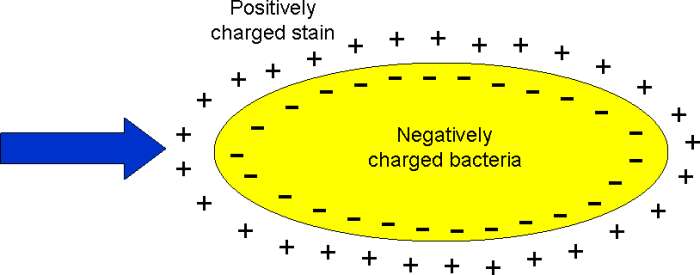
STAINS/ DYES
They are colored organic compounds used for staining microorganisms. Chemically,
Stains= Benzene ring+ Chromophore+ Auxochrome
According to nature of stain, it can be classified into:
1. Acidic Dyes: It is dye which has negative charge so they bind to positively charged cell structures like some proteins. Acidic dyes are not very often used in Microbiology lab.except to provide background staining like Capsule staining. Examples: Nigrosine, Picric acid, Eosin, Acid fuschin, India ink etc.
2. Basic Dyes: This dye have positive charge & bind to negatively charged molecules(nucleic acid, -COOH -OH). Since, surface of bacterial cells are negatively charged(due to Teichoic acid), basic dyes are most commonly used in bacteriology. Examples: Crystal Violet, Methylene Blue, Safranin , basic fuschin.
3. Neutral Dyes: They are usually formed from precipitation in which are produced when aqueous acidic & basic stains are combined. Neutral dyes stains nucleic acids, & cytoplasm. Eg; Eosinate of Methylene blue, Giesma stain.